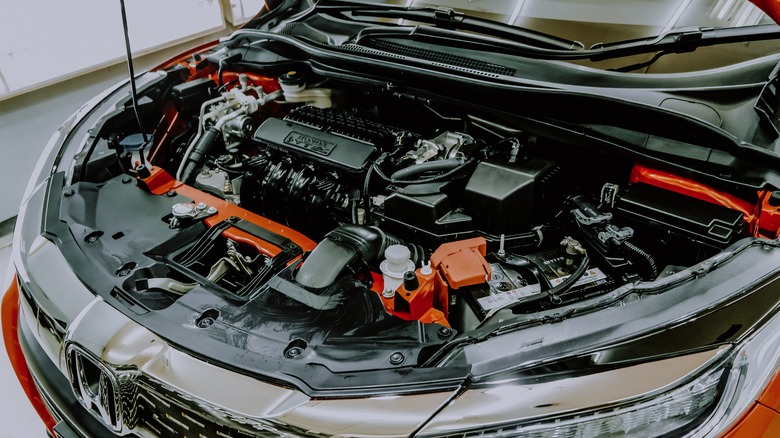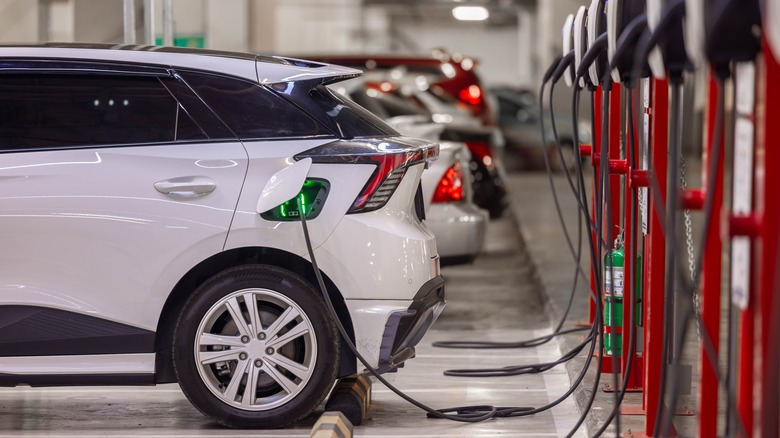Engine Vs. Motor: Key Differences Explained
Cars have been around for well over a century, though it didn't take them nearly that long to become ingrained in our everyday way of life. In short order, they became essential for commuting to work, traveling for leisure, or even just visiting friends and family. Sure, some other unusual modes of transportation that you can actually use today have cropped up alongside them, but as it stands, cars remain at the front of the pack — especially since so much innovation has occurred within the industry, which will likely continue for the foreseeable future.
To say that modern cars are comprised of tons of moving parts would be quite the understatement. From electronics inside the cabin to aid in comfort to numerous internal components that work as one to keep the vehicle moving, there's a lot for someone new to the automotive world to wrap their head around. Two of the most important elements of a car one should know about are engines and motors. Though they're often used as interchangeable terms for the same thing, the truth of the matter is, that is not accurate.
Engines and motors are incredibly different in more ways than one. Here are the key things that set them apart from one another.
Engines are all about internal combustion
The combustion engine dates back to the 19th century, with several inventors contributing to its creation throughout its history. In the modern era, it is a staple of transportation, with the majority of vehicles on the road, in addition to planes, trains, boats, and more, running on them.
Over the years, different engine layouts have come to fruition, including straight, V, inline, and flat, with them finding power from gasoline or diesel fuel. The new 2024 Ford Maverick, for example, runs on a combustion engine and a relatively fuel-efficient one at that.
With all of this in mind, how do combustion engines actually work? They consist primarily of cylinders, pistons, and valves, which all work together to create, as the name implies, combustion, to make a car move. The cylinders take in air and fuel, the two mix, and they're compressed by the pistons. Spark plugs ignite the mixture and cause a contained explosion, which moves the crankshaft, powering the transmission and moving the wheels. Throughout it all, the valves open and close to allow air to enter and exhaust to exit at specific times.
Motors turn electric power into torque
Surprisingly, electric motor-powered vehicles date back to the 1800s, though, evidently, they didn't catch on quite like their combustion engine counterparts. However, that has begun to change in recent years as more car manufacturers, like Polestar with its 2024 single motor Polestar 2, have gone all-in embracing fossil-fuel alternatives. Thus, several different electric motors have been invented, such as the DC series motor, three phase AC induction motor, and permanent magnet synchronous motor, to name a few.
Considering they run on a different energy source than engines, motors don't operate in the same way. The average EV motor is made up of two sets of magnets, with one attached to a shaft and the other to the shaft's housing. At least one of these sets needs to be an electromagnet. The consistent reversing of the electromagnet's polarity causes a repelling force that turns the shaft, converting the applied electricity into torque that causes a car's wheels to turn. At a full battery charge, this action within the motor can carry a typical electric car between 110 and 300 miles before depleting — emissions free, mind you.
Overall, engines and motors serve the same function, propelling cars with the simple press of a pedal. At the same time, they're considerably different entities that go about their main task in vastly different ways.


